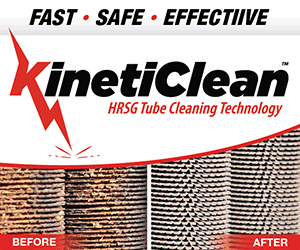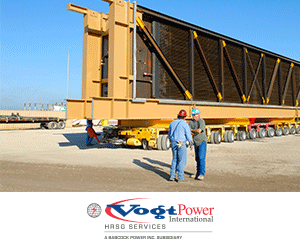 Online forums sponsored by gas-turbine user groups are of increasing value to owner/operators, especially given today’s smaller O&M staffs at simple-cycle, combined-cycle, and cogeneration plants and the loss of experienced personnel to retirement and better opportunities. Long gone are the days of on-the-job training when new employees would tag along with experienced crews to grow their knowledge over time.
Online forums sponsored by gas-turbine user groups are of increasing value to owner/operators, especially given today’s smaller O&M staffs at simple-cycle, combined-cycle, and cogeneration plants and the loss of experienced personnel to retirement and better opportunities. Long gone are the days of on-the-job training when new employees would tag along with experienced crews to grow their knowledge over time.
2025 WTUI Coverage
- President’s welcome, leadership, history
- WTUI 2025: What’s in store – overview and technical agenda
- WTUI 2025: Exhibitors and sponsors
- WTUI 2024: Detailed conference recap
- WTUI AERO FORUMS: O&M advice free for the asking (below)
Thus, today you may be at a loss on whom to call with an important question. If that’s the case, try posting that question to the forum serving your engine model. Oftentimes you’ll receive expert advice at no cost within a day or two. Most likely your issue is not unique. Also, in need of a part in a hurry? Ask colleagues online to loan you their spare until you can replace it.
Forums serving the larger user groups typically provide the best results by virtue of their global reach. To illustrate the value proposition, CCJ editors selected a few questions posted to WTUI’s LM2500, LM6000, and LMS100 Forums in 2024 along with a summary of the guidance offered. To join, contact Treasurer/webmaster Wayne Feragen at wferagen@wtui.com.
LM2500
Sump temperature spike
Question: Has anyone experienced a rapid temperature increase in the A sump and accessory gearbox (AGB)—sometimes referred to as the transfer gearbox? Normally, AGB temperature is about 200F (round numbers), but in just a few minutes it jumped to 300F and stabilized. The A sump temperature exhibited the same behavior, but the temperature increase was only about 60 deg F.
Replies:
The first respondent said he witnessed the same at his plant for one unit packaged by Baker Hughes and installed in 2019. “We will see everything run fine for a period of time after a startup,” he said. Then, all of a sudden, AGB temperature will increase to about 300F. Lately, there also has been a loss in SLO tank level at the same time, with no leak apparent. We have been doing some troubleshooting, but have not found anything definitive, yet.
The exchange continued with the questioner, a senior rotating-machinery engineer (RME), asking the first respondent if he also saw a rapid temperature in A sump. No immediate answer was forthcoming.
The RME added that clutch temperature also had increased while tank level decreased. At first, he believed there might have been a failure inside the AGB causing friction and the temperature increase. Or, it might be reduced oil flow causing the temperature increase. However, he considered the rapid increase in temperature without warning “puzzling”. One more observation: A minor increase in gas-generator vibration.
A second user joined the conversation with the following opinion: Sounds like either your air ejector has cracked internally and is not drawing in compartment cooling air or your No. 3 air seal has failed and you’re pushing air out of the ejector instead of drawing cool air into it.
One way to check is by putting your hand—protected by a welding glove—over the ejector screen to see if air is being pushed out while the engine is operating. If the engine is not operating check to see which side of the screen is dirty. If it’s the outside then air is being draw in; if inside, the opposite.
The first respondent returned to say, “That something we are looking into but I would have assumed that if the ejector tube had cracked we should be seeing an increase in all sumps.”
His experience was the same as that of the questioner: Major increase on the AGB drain temperature, minor increase on A sump temperature, and virtually nothing to speak of on B/C sumps.
A user with relevant experience asked to join the dialog offered the following: “Although air from the A/GBX cavities does communicate to the other sumps, the “low” temperatures in the A sump and GBX areas are cool enough to act as a tell-tale, moving temperature up noticeably, whereas the aft sumps are so hot that the casualty only moves the temperatures a few degrees, or maybe even imperceptibly. Also, the fact that the temperature stabilized and didn’t run away tells us that it’s a cooling step change and not a bearing welding itself to a shaft.”
Concluding remarks from the questioner: A seal and/or ejector failure may explain the 60 deg F increase in the A sump temperature; however, “I’m still struggling to understand the rapid increase in AGB temperature. Finally, we have seen this rapid temperature increase two times in June, never before.
LM6000
MetalSCAN: What’s your experience?
Question: We saw a presentation on MetalSCAN at WTUI and wanted to see if anyone else uses this system for debris detection in their sumps. If you have the system, do you have any pros or cons with it to share?
Editor’s note: If you are considering a MetalSCAN system for your plant, the responses below may prove helpful in your evaluation. Bear in mind that some of the respondents have deep experience with the system, some have a deeper understanding of the technology and its limitations than others, some have legacy knowledge from a time when the system was not as sophisticated as it is today. If you have questions after digesting this material, consider posting them on the Forum.
Replies:
Respondent A said his plant installed MetalSCAN more than 10 years ago and had a wealth of experience. GE does not take the information the diagnostic system delivers seriously, he added, but in most cases the system will let you know when “something is happening.” This plant operates 24/7.
Respondent B agreed with A’s comment, saying the system is sensitive and will indicate issues days ahead of chip detectors. This site has experienced two bearing failures over the years. While using MetalSCAN to detect and monitor progression of the issue plant personnel were able to mobilize a replacement engine and resources before the unit was removed from service. Chip detectors did not identify the problem until the late stages of the failure.
OEM Gastops Ltd provided this user metal analysis support, helping to identify which bearings were liberating material.
Respondent C said his plant recently installed MetalSCAN and had no issues to report, but also little operating history to share. The driver for installing the system was the number of chip-detector alarms typically received after an outage which required shutdowns to investigate. Because most of these alarms had been triggered by non-bearing material, the expectation was that Gastops’ technology would help plant personnel decide if a shutdown was necessary.
Respondent D. The MetalSCAN multi-sensor system is a valuable contributor to turbine operational management. It detects particles in the oil early, warning of potential bearing damage, thereby allowing staff time to plan maintenance and avoid more significant damage and costly unplanned shutdowns. Magnetic chip detectors do not indicate an increase in temperature or in vibrations.
Respondent E. For what it’s worth, we had an early iteration of MetalSCAN and it was nothing but distracting and unreliable. I cannot speak to the usefulness of current versions. Also, I would not dismiss a chip-detector alarm just because MetalSCAN was not indicating the presence of chips.
Respondent F charged out of the gate, so to speak, with a stinging rebuke of MetalSCAN, saying he did not know of any successful installations. It’s been around for over 20 years, he said, adding that “GE tried to sell it as an upgrade, but I think there were lots of false positives.”
A day later, in a second post, F dialed back on his assessment explaining why he believed false positives occurred. One reason, based on his findings, was that the system has difficulty identifying the source of ferrous particles when multiple components are ferrous.
He also questioned the reliability of the system’s particle counting capability and its differentiation of particle sizes.
While all of this might be true, it appeared to the editors that most users view MetalSCAN much like the proverbial canary in the coal mine: To warn of potential danger. They did not seem to regard particle characteristics as important, generally speaking.
Respondent G offered a very detailed assessment of MetalSCAN, one totaling more than two typewritten pages. Here are a few takeaways from that response:
- MetalSCAN does what it is designed to do: Detect all particles, Fe and nonFe, and warn at predefined Fe mass limits. It will enable you to understand where you are in the degradation process of a bearing failure to better guide corrective action and minimize the impact.
- It will not avoid bearing damage but will avoid secondary damage and its cost.
- Once installed, life gets easier, reducing the downtime required to stop and pull chip detectors, take oil samples, perform analyses, etc.
- System results are good and sufficiently correct to predict and recognize a bearing failure at a very early stage.
- Fleet experience included several catastrophic bearing failures with significant secondary damage prior to MetalSCAN installation; after installation, there were no catastrophic failures.
- Interpretation of the data gathered can be learned quickly; plus, you can always send the data to GasTops for their opinion.
- MetalSCAN and other actions allowed this user to extend maintenance intervals, reducing the number of outages that had been taken previously.
- Recommendation: Opt for the multi-sensor version of the system, not the single-sensor offering, which will not tell you which bearing is failing.
VFD pump versus pressurized loop
Question: We have two dual-fuel units that use a variable-frequency drive instead of a pressurized loop and metering valve to supply the fuel nozzles. According to the previous operators, the VFD configuration has reliability issues, especially on startup.
We are considering upgrading the system and returning to a traditional pressurized loop and metering-valve arrangement. Are any users with a VFD configuration for liquid fuel delivery experiencing reliability issues?
Replies:
Respondent 1. We use a common pressurized header to supply all seven of our LM6000 PC machines ultra-low-sulfur diesel fuel. The three forwarding pumps are equipped with VFDs and a return line with a metering valve and flowmeter—all to maintain 70 psig on the common header. Pumps at each unit boost fuel pressure from 70 to about 1000 psig.
Loop pressure is tied into the DCS, along with the metering valve and flowmeter. As the turbines ramp up, this arrangement keeps system pressure stable and starts closing the return line to maintain a flow rate of 95 gpm. There have been no issues since installation about 15 years ago.
Respondent 2, first post. I won’t use a VFD/pump arrangement: You always will have problems. GE had this design 20 years, or so, ago for its Gen 3 trailer-mounted TM2500s; no longer. I think that says a lot.
Remember that gas turbines often require very precise fuel delivery, and during startup and low-load operation there won’t be much flow going to the combustor. The VFD might struggle to maintain the required accuracy because of pump characteristics at the lower speed.
Regarding dynamic response, on rapid changes in demand during load changes the pump inertia with VFD may give a slower response time than Woodward metering valves.
Finally, pump speed control might be an issue. Mechanical inertia and the VFD’s ramp-up time might still lag rapid load changes—especially on transients.
Respondent 2, second post. If you are planning an upgrade, note that it is crucial to ensure the return line is routed back to the tank rather than to the suction. This approach reduces the heating effect and mitigates stability issues with the lead-lag operator in the fuel control software for the core.
Although routing to the tank may increase piping costs, it’s worth the investment. This method improves fuel-regulator dynamics, making the system’s gains smoother and more stable. My experience suggests this consideration is very important for achieving optimal performance.
GoPro cameras
Question: Does anyone have the information/layout for installing GoPro cameras inside the gas-turbine enclosure?
Replies:
Respondent 1, first post. GoPro cameras are not certified for IECx or ATEX, so they are not intrinsically safe to use in gas-turbine packages. The lithium-ion battery in these cameras can be dangerous because of the heat.
Respondent 2. We use AXIS cameras. Access this late November post on WTUI’s LM6000 Forum to see the photos provided by the respondent. The cameras are kept on magnets so they can be moved around conveniently for troubleshooting.
Respondent 1, second post. If you need cameras for a gas-turbine package, consider ATEX-certified explosion-proof cameras that meet the requirements for hazardous zones. Use of a non-certified device in a GT package is a significant liability and can lead to claim denial, regulatory penalties and operational risks.
How to heat liquid fuel
Question: We are designing liquid fuel systems for two LM6000 PCs located in west-central Arkansas and trying to figure out what makes economic sense by way of heating. There will be two large fuel tanks for a seven-day supply. Winters usually are mild, but there are times when temperatures can turn brutally cold.
We think we’ll need to add electric heaters but aren’t sure it makes sense to heat the entire tank.
Are any users heating their liquid fuel systems? If so, is heat added at the tank, or are you using some type of inline heating to keep the fuel above the wax point?
Replies:
Respondent 1. We are in New Jersey and have 440-V inline heaters installed just before fuel enters the packages—one per package. We do not heat our 3.1-million-gal tank.
Respondent 2. We’re in Nebraska and have two 700-kW heaters arranged in parallel ahead of our packages, not in, or upstream, of the storage tanks. Usually only one heater is in service; heating elements are cycled up and down.
Respondent 3. I agree with Respondent 1: No need to heat or insulate the whole tank. Electric heaters, properly sized, should do fine. There are fuel additives available to extend the pour point down another 10-15 deg F if that makes you feel better.
Keeping water out of your system is very important, as it will promote microbiological growth. Should that become an issue, you’ll need another additive to keep it under control.
For large tanks, stratification is another possible issue to consider. Having a recirculation line in service on each tank helps alleviate it.
Finally, be sure to allocate enough O&M labor man-hours in your plant budget for fuel maintenance—it’s a time-consuming task.
Respondent 4. We are on the eastern shore of Virgina and have five above-ground unheated diesel storage tanks. Normal winter temperatures are around 30F but it can get into the single digits. Uninsulated piping from the tanks to unit heaters travels about 20 ft before entering the HP pump skids. Piping after the heaters is insulated. Works fine.
Respondent 5. Immersion heaters and inline fuel heaters are the most efficient and reliable options. Another is to buy winter diesel which has the wax removed. Still another is to use waste heat from the generating unit or elsewhere to preheat the oil. My experience suggests that if you don’t heat everything you end up concentrating the wax over time.
Respondent 6. We have two 250,000-gal insulated storage tanks with 40-kW immersion heaters to keep the oil at 60F, thereby ensuring consistent starts on diesel. We used to maintain the oil cooler than this, but over time realized that 60F assures reliable starts on oil, even during extreme cold.
The 40-kW heaters can maintain temperature if we are not turning over the oil, but when burning diesel, the heaters can’t keep up. Our fuel terminals are more than 90 minutes away and we can consume oil faster than we can receive it. Thus, as the fuel tankers travel and line up to offload, the oil often is at less than 10F, waxing everything it touches. So, we usually have to pull the suction strainers from the unloading pumps to keep oil flowing.
Recently, we installed a fuel unloading heating and recirculation system. It allows us to move oil through two 150-kW heaters as it is unloaded, helping the immersion heaters and hopefully keeping oil above its waxing temperature. Larger heaters would have required more modifications to the MCCs and switchgear.
Once unloading is finished, we can use the new heating system to recirculate oil in the tanks to both filter and heat it, thereby helping the immersion heaters maintain fuel temperature.
A side note: During extremely cold conditions we may get only one start attempt. With fans flowing 60 kscfm of air at well below 0F through the package, water piping will quickly freeze-up, even with heat tracing and insulation. So, it’s a race against time to get water flowing before it freezes. If you have a failed start, you may not get another opportunity.
When to pull your generator rotor
Question: One of our Brush BDAX generators is reaching 50k hours of operation in more than 12 years of service. The OEM says the rotor should be pulled for a major inspection at this time but we are reluctant to do this and instead perform a “minor” service. What do you think?
Replies:
Respondent 1. Officially, a “rotor out” inspection is specified after 50,000 hours. However, the OEM has a robot crawler that can go down between the stator and rotor windings and do some in-situ functional testing using a small hammer. Perhaps a positive result may allow you to put off the major inspection to 100,000 hours.
In any event, I recommend pulling the DE and NDE bearings, which can be completed with the rotor installed.
Respondent 2. Besides any electrical testing, the exposure to ambient air must be considered, unless you have a TEWAC cooler and air is recirculated, thereby reducing the amount of new air pulled through the unit. Depending on the nature of deposits found, you might consider going from a generic F9 filter towards HEPA.
Also, the number of starts will influence generator wear and tear. For our 7EAs, we reached the need to rewind at about 2000 starts and less than 15,000 service hours, some 30 years after COD—with heaters on while offline.
Note that having heaters on while offline seems to matter. I do not have a factor for how to account for time offline, and it seems strange that a generator would age with the heaters on, but that seems to be the case.
Turning-gear time also must be factored into your thinking. In our case, TG hours are a multiple of run hours.
Don’t forget to check the bearings.
Respondent 3. We pulled all eight of our rotors at 12 years—12k to 15k hours and 5500 to 6000 starts. All units tested satisfactory, just needed a good cleaning. We replaced bearings, jacking-oil lines, vibration probes, soft goods, and the insulation on generator leads. In-house maintenance did the work because the company had its own maintenance shop at the time. This participant in the online discussion offered a PowerPoint presentation on the work conducted. You can view it on the Forum.
Respondent 4. Having a 12-yr-old peaking unit with 50k hours of service, you should be looking at doing a major inspection or a RoGIS (Robotic Generator Inspection System) plus borescope. Bear in mind that a RoGIS can be unreliable and if any issues surface you have to pull the rotor anyway.
Jacking hoses should be changed every five years, at a minimum, because hose insulation breaks down in the oil—especially that on the old-style hoses. There’s a service bulletin for hoses of latest design which have an extra layer of sleeving on them.
Respondent 5. We just completed our first rotor-out major inspection on a unit with 138k service hours, following regular inspections at 50k and 100k hours—during which we performed RoGIS inspections, removed bearings and seals for inspection/replacement, conducted electrical inspections of the stator, rotor, and exciter, and replace jacking-oil hoses.
Our findings from the first rotor-out major were minimal with just minor cleaning required. We’re not necessarily recommending going as long as we did, but we’ve been fine getting by with the RoGIS in place of a rotor-out.
Follow-up note: With the unit back in service for a few weeks staff discovered multiple bolts that hold the exciter frame to the stator had snapped off—presumably over-torqued on reassembly and failing when the unit reached operating temperature.
Visit the Forum if the views of LM6000 colleagues on the following 2024 topics are of interest to you:
- Lube and scavenge pump leak
- LPT PCC system
- Leakage on the HLO hose
- Gas control valve
- Turbine and generator vent fans
- Meggitt CDP bleed-valve failure
- P48 failure and LPT damage
- Alstom 72.5-kV breaker repair or replacement needs
- CEMS issues
- Clam-shell welding
- Brush generator BDAX7 rotor-out interval
- Fuel-gas supply quality—superheat measurement and control
- Depot repair duration
- Trane CDHF chiller electric motor issue
- Aftermarket silencer
- Sprint demin water flow
- Lockout avoidance upgrade
- Issues with air permit while using leased engine
- Hydraulic rectifier for four-hour lockout avoidance
- Operator rounds
- Roto-jet pump rebuild
- VBV null current shift alarm and VBV position error alarm
- TGB/A sump aluminum?
- Liquid-fuel storage AFFF fire suppression PFAS abatement
- Flame detection logic
- PX36 sensor overhaul or qualification
- SB239 Inco-718 LPT coupling nut
- GoPro in package system
- Problems with the VBV feedback signal
- Ninth-stage HPC end gap
- FOD sock assistance
- LP rotor not rotating
- DLE mapping training
- PF fuel-line contamination
- LTSA/CSA contracts
- Hose management
- SB316/SB352
- Filter house plenum
- Compressor deposits
- HPC blade failure
- Wiring flame detector
- Air inlet freezing conditions
- Staffing
- Hydraulic starter and clutch
- Hydraulic starter filter leaks
- Inlet canister filters
LMS100
Intercooler seal section missing
Question: We have about a 2.5-ft section of the picture-frame seal missing from our intercooler, made by Industrial Heat Transfer (IHT). Because we have a forced outage to fix a tube leak, we wanted to replace this seal, but just received an extremely high quote from GE, plus a very long lead time. There are other sections on the seal that are getting brittle and starting to tear. In addition, there’s also a large section of the lower seal missing. Photos are available on the Forum web pages.
While there definitely some air bypassing the intercooler, we haven’t noticed a huge amount of power loss because of this.
Note that T25 has been running at about 95F to 100F. Temperatures on TE9001B (just after the intercooler and before the transition pipe) are 85F on A1/A2 and about 118F on B1/B2.
Has anyone had a similar experience? Have you been keeping up with these seals and getting them repaired? Have you found a supplier other than GE for the seals?
Replies:
Respondent 1. We’ve had an almost identical experience.
Respondent 2. No need to get from GE; it’s just high-temperature rubber. We use material from McMaster Carr for those repairs (find link to catalog on the Forum). Also, we have established a proven method for intercooler tube cleaning, repairs, and plugging using a turnkey contractor. Connect with this respondent via the Forum for contact information.
Respondent 3. Similar experience with the seal deteriorating and breaking off. We have not had an outage long enough to make the replacement and have been filling in the gaps with high-temperature fast-drying silicone.
We keep up with the cleaning of intercooler tubes and don’t notice any major losses at these seals. We get the heat transfer needed despite the poor condition of door-frame seals.
We would like to replace the seals around the door at some point, but with cutting and welding of stainless steel involved, we keep pushing this out until we have a longer outage planned for something else.
Response from the person asking the question. We finished the intercooler outage and the unit was returned to service. There was good improvement in the intercooler exit temperature after the tube cleaning (TE9001B). It had been running at about 117F and now is 90F; T25 is 85F.
We were unable to do any repairs to the picture-frame seal this time. It still has significant damage to it, but a large derating is not a result—at least now while the weather is mild. A reply from GE as to how critical this seal is for power output had not been received by the end of 2024.
Respondent 4. Dropping from 117F to 90F is a huge difference. We did some tube cleaning as well, but did not see a performance improvement as dramatic as yours.
Do you have the high-temperature intercooler? When you did your tube cleaning did you notice a heavy build-up? Were a lot of tubes clogged prior to cleaning?
Response from the person asking the question regarding the questions asked by Respondent 4. The intercooler is of IHT’s original design, built in 2008. There was a lot of buildup in the tubes with most in the front row clogged. We were able to clean out all but 17 of the 2596 tubes. However, an additional six tubes had to be plugged because of leaks detected. Initially, we used the GE procedure to weld plugs to the tubesheet, but then switched to a pop-a-plug kit, saving a significant amount of time.
Visit the Forum if the views of LMS100 colleagues on the following 2024 topics are of interest to you:
- Does anyone in colder climates change their generator turning-gear lube oil to a thinner oil?
- Battery explosion during testing
- Tempering-air fan damper?
- LMS100 HPC eighth-stage failure X2
- GE familiarization training for operators
- Eighth-stage cooling manifold broken; spares available?
- Intercooler tube inspection









